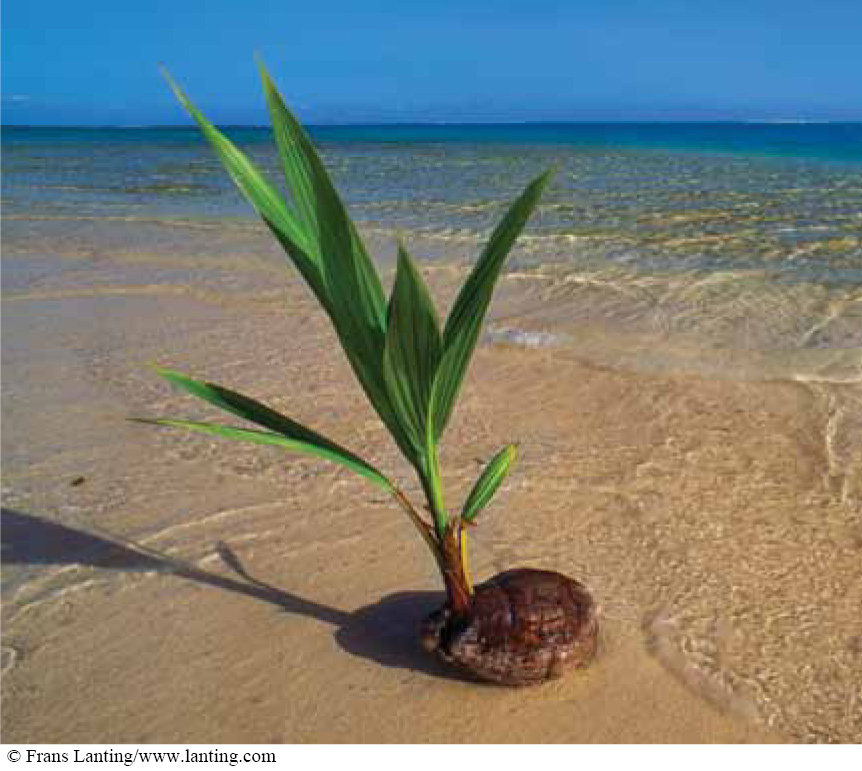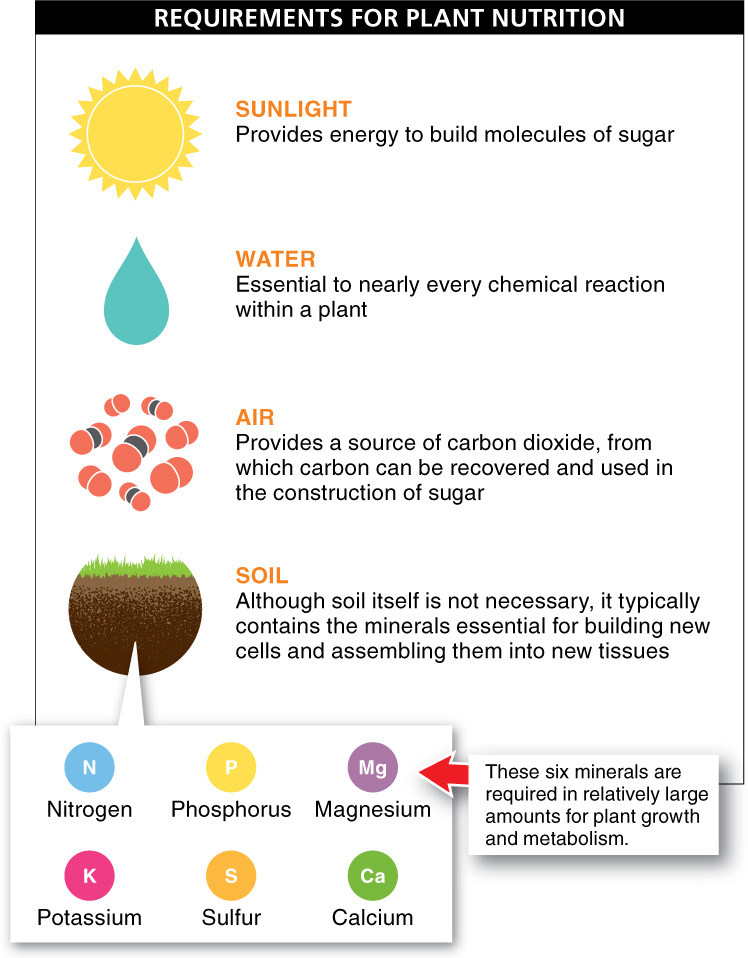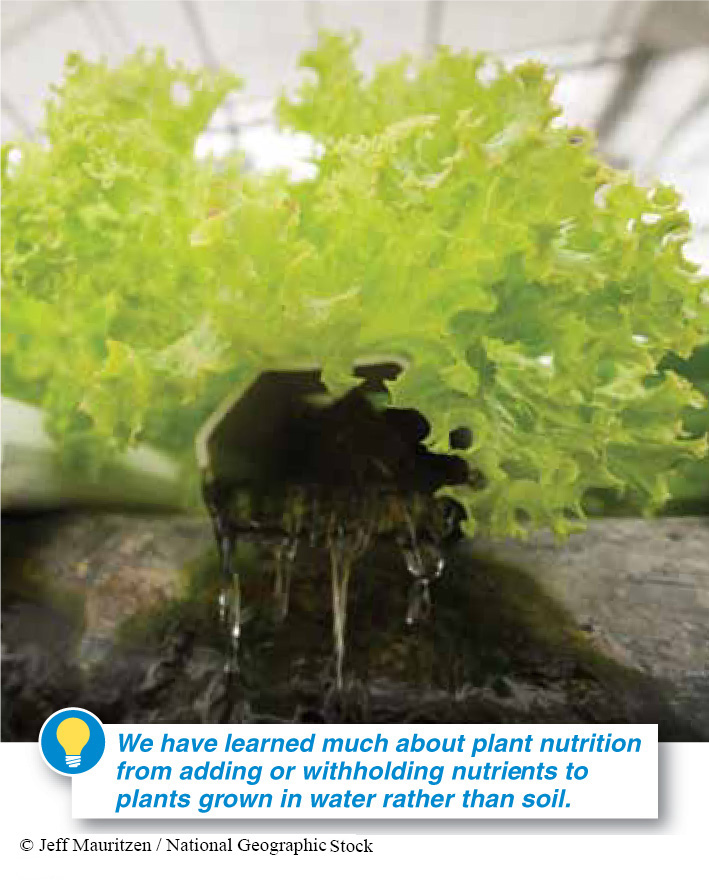
Gardening is harder than it looks. Plants need sunlight, water, and air to thrive. But that’s not enough. Just as humans will not grow and remain healthy without a nutritious diet, plants will get sick, wither, and even die if they don’t have adequate nutrition (FIGURE 17-20). Let’s examine just what that means.

Plants generally require four things for proper nutrition. The first three are (1) sunlight for the energy to build molecules of sugar; (2) water, for numerous reasons, including as a source of electrons for photosynthesis (see Section 4-
For a plant to grow, it must build new cells, which are then assembled into new tissues. These new cells must have cell walls, DNA, mitochondria, and all the other cell components. The raw materials for these structures are the chemical elements used to construct the molecules from which the structures are formed. Aside from the carbon and oxygen obtained from CO2 in the air and the hydrogen from water, plants must get all of these raw materials elsewhere, usually from the soil. In all, there are 13 different minerals (each of which is an element) that plants require for proper survival and growth.
704
Six of these 13 essential elements are required in relatively large amounts and are particularly important for producing proteins and the enzymes that catalyze all the reactions taking place in plants:
nitrogen, for making proteins and DNA
phosphorus, for making ATP, DNA, and cell membranes
magnesium, for making chlorophyll
potassium, for making enzymes and controlling water balance
sulfur, for making proteins and vitamins
calcium, for a large variety of cell functions
Plants need seven additional elements in much smaller amounts: chlorine, iron, boron, manganese, zinc, copper, and molybdenum. How small are the amounts needed? A plant could get all the chlorine it needs for the day just from being touched by a human with sweaty fingertips. Similarly, a tiny amount of one of these minerals may be present in the seed that the plant grows from, and this amount may be enough to supply the plant for its entire life. In other cases, the plant must “reach out” to obtain these elements from the soil by growing roots that reach to where the elements are.
Can a plant grow without soil? How?
Much of what we know about plant nutrition comes from experiments with hydroponically grown plants (FIGURE 17-21). These plants are grown without soil. Instead, they are grown in water that has chemical elements added. By adding or withholding exact amounts of certain elements, the researcher can determine which are essential and in what amounts. These findings are important in helping farmers determine what types of fertilizers they need for crops, as the farmers try to coax more growth out of each acre of land than would occur naturally.

TAKE-HOME MESSAGE 17.8
Plant growth depends on four important factors: (1) sunlight for energy, (2) water, (3) air as a source of carbon dioxide and oxygen, and (4) minerals, usually obtained from soil.
Why are the elements nitrogen (N), phosphorus (P), and potassium (K) present in very large amounts in commercial lawn fertilizers?
These are three of the essential elements plants require in relatively large amounts. The others are magnesium (Mg), sulfur (S), and calcium (Ca).